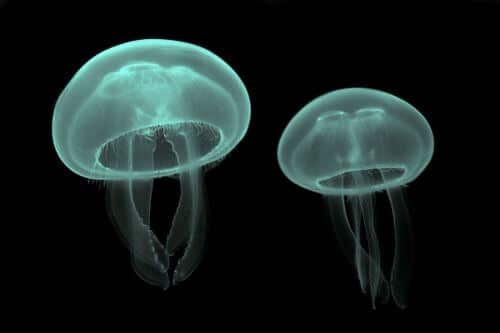Researchers have succeeded in using a protein found in jellyfish to create a polariton type laser, which until now they have not been able to produce in a simple and efficient way / by: Dafna Haim-Langford

When the laser was first invented, it was a technology looking for an application. A decade later, we use laser devices in medicine, to scan bar codes, in military systems, for industrial cutting and even to point at things...
Laser devices of different wavelengths are used for different applications. Red laser for example is used for sensors, or CD players, blue laser can be used for information storage and medical applications and more. One of the most innovative lasers, but not used yet, is the Polariton laser. A polariton laser, unlike normal lasers, works by the movement of photons between excited molecules. This laser, although very effective, has not reached widespread use because it requires extreme cold conditions (about 200 degrees Celsius) to operate properly.
A collaboration of scientists from Scotland and Germany resulted in the first development of a polariton laser based on a fluorescent protein from jellyfish. The molecular structure of fluorescent proteins is significantly different from the synthetic fluorescent substances, this fact led to the development of the innovative laser. It turns out that by means of the jellyfish proteins it is possible to create a polariton laser at room temperature!
In order to create the new laser, the scientists used E-coli bacteria cells to produce green fluorescent proteins from jellyfish. To create the laser device, the protein molecules were coated with a thin layer (500 nm) and trapped between two mirrors. To create the laser beam, all the scientists had to do was illuminate the device with blue light, which stimulated the proteins to the point where they spontaneously produced a synchronized polariton laser beam.
Previous attempts to produce a polariton laser failed because the exciting particles collided with each other and very low temperatures were required to overcome the phenomenon and bring the particles into synchronization. But in the case of the jellyfish proteins, the basic structure that keeps the fluorescent molecules inside protects the excitable particles from interfering with each other.
One of the possible applications is the identification of cancerous cells, which may have a different wavelength than healthy cells, so using this type of laser will allow a simple differentiation.

2 תגובות
Missing a little proofreading!
Polariton laser - something completely different (it's a laser based on atoms in the state of bosons in a condensate)
The laser was invented more than a decade ago (Einstein's formulas 1916 and the first functioning laser 1954)
200 degrees Celsius is not really cold
Identifying cancer cells????? What is the connection? how? Why? Some? Ah, just pushed a nice sentence.
If you want, it is not a Haggadah, many medicines can be obtained from plants and animals and not only from chemicals in chemical systems, extremely high or low temperatures are also required, which make research and efficiency difficult, and the cost of medicines is a good opening for further research in similar branches.